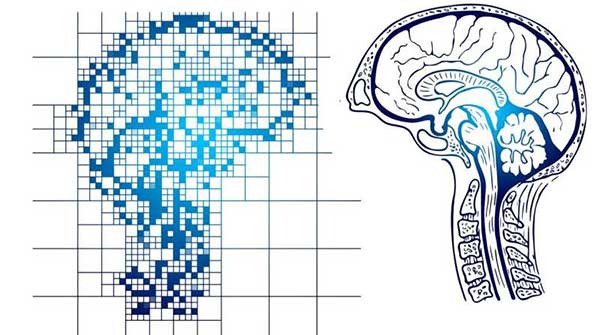Finding unexpected because women are diagnosed with Alzheimer’s more often than men
Scientists at the University of Alberta have discovered that important risk factors in Alzheimer’s disease affect males and females very differently.
“Two types of risk for Alzheimer’s disease work differently for males and females, and dramatically so,” says Mackenzie Heal, neuroscience master’s student in the Neuroscience and Mental Health Institute graduate program and lead author on the recent research.
In the large-scale study, the researchers used neuroinformatics to analyze data from 623 older adults over 44 years of their lives, from ages 53 to 97, drawn from the database of the Victoria Longitudinal Study.
The researchers looked at two known Alzheimer’s risk factors – a gene called bridging integrator 1 (BIN1), and vascular health, measured by pulse pressure. They then compared a known early symptom, episodic memory decline, in males and females. Episodic memory refers to our recollection of everyday events like what we ate for breakfast the previous day.
“In the study, we found that for everybody, memory decline was affected negatively by poor vascular health (high pulse pressure),” Heal explains. “Second, for those with BIN1 genetic risk, even good pulse pressure couldn’t protect them from memory loss. And third, for males with BIN1 genetic risk as well as poor vascular health, the slopes were a lot steeper, showing a sharp decline in memory, while for females it did not.”
This finding is unexpected because women are diagnosed with Alzheimer’s more often than men. There are several reasons for this, one being that women live longer than men, but other neurobiological and hormonal changes in midlife also play a role.
Discovering that these two risk factors don’t have the same impact on women speaks to the importance of taking differences between men and women into account when diagnosing and treating Alzheimer’s, says Heal’s graduate supervisor and study co-author Roger Dixon, professor of psychology in the Faculty of Science and NMHI member.
“Precision health approaches are needed; a different treatment may be necessary for a person with one risk profile versus another one, and this has important implications for prevention and treatment.”
The researchers looked at 44 years’ worth of data because Alzheimer’s disease has “an insidious onset,” Dixon notes.
“That means it starts way before we can diagnose it. Not just five years, but 10,15, 20 years before diagnosis, there are changes in the brain that are early signals of the disease.
“One thing a lot of researchers are doing is aiming to find those individuals who are most at risk for Alzheimer’s disease long before they get it, because once they get it, there is not much we can do except alleviate some of the symptoms,” says Dixon.
The problem is how to identify the people who are at high risk.
“Fortunately, there are a number of large-scale longitudinal studies where we follow older adults and produce trajectories of change over time in factors that matter for Alzheimer’s disease – and this is where Mackenzie’s article falls into it,” says Dixon.
“We need neuroinformatics and analytical technologies that will help us identify combinations of risk that are most problematic for individuals.”
According to Dixon, another complicating factor is that everyone accumulates some risk factors as they age, and there are multiple risk factors that can lead to Alzheimer’s disease. So there’s not a single risk factor that will tell researchers who will get it or not – it’s a combination that unfolds over time.
But if they have the right data, they can track and identify who is most at risk, he says.
“There are many pathways that lead to Alzheimer’s disease, so the study looked at both the genetic risk and vascular health alone and together,” says Dixon. “Some pathways lead toward Alzheimer’s disease and some lead away from it. What we are doing here is finding subtypes, as defined by these risk factors, and identifying which ones are most likely to benefit from what kind of risk intervention or risk reduction intervention.”
“We need to be able to determine the risk factors way earlier on,” adds Heal, “because currently, there is no cure for Alzheimer’s disease.”
| By Ramona Czakert Franson
Ramona Czakert Franson is a reporter with the University of Alberta’s Folio online magazine. The University of Alberta is a Troy Media Editorial Content Provider Partner.
The opinions expressed by our columnists and contributors are theirs alone and do not inherently or expressly reflect the views of our publication.
© Troy Media
Troy Media is an editorial content provider to media outlets and its own hosted community news outlets across Canada.


